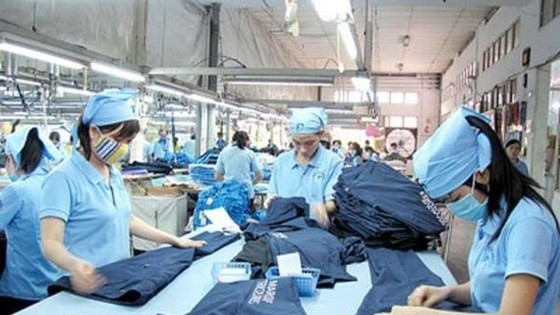 Vietnam will rise to third largest exporter of clothing in the world
Vietnam will rise to third largest exporter of clothing in the world
Accordingly, Vietnam's textile and garment export market share in the world accounts for 6.4 percent of the global market share behind China with 31.6 percent and Europe with 27.9 percent.
Economist Huynh Thanh Dien said that Vietnam's three main textile and garment export markets are Europe, the United States, and Japan. These are also the three largest import markets for textiles and garments in the world, accounting for 34.1 percent, 16.8 percent, and 5.3 percent of the global market share respectively.
In fact, Vietnam's textile and garment industry has been developing strongly and playing an increasingly important role in the growth of the economy. In 2021, the textile and garment export turnover reached US$40.4 billion, accounting for 12 percent of the country's export turnover, then only in the first half of 2022, the textile and garment export turnover will reach about $23 billion, an increase of 21.6 percent against the same period in 2021.
However, the country's textile and garment industry is also facing many risks and challenges. Mr. Huynh Minh Vu, Deputy Director of the Center for International Integration Support in Ho Chi Minh City, said that currently, consumer demand in major textile and garment consuming markets such as the US and EU has decreased due to the impact of inflation. Worse, the developments of the Russia-Ukraine conflict pushed up the price of input materials.
In addition, the risk of Covid-19 epidemic resurgence in relation to SARS-CoV-2 sub-variants is high. This has caused many countries and territories that are important trading partners of Vietnam such as China, Japan, and Taiwan to apply strict anti-epidemic measures, greatly affecting the country's supply chain and consumption of textile products.
On the other hand, the effects of exchange rate fluctuations in import and export activities, labor shortage after the pandemic or requirements for traceability of cotton, fabrics, yarns, and requirements for the greening of textiles and garments from other countries.
The new Free Trade Agreement (FTA) also has a significant negative impact on industry performance. Another important factor is that textile enterprises in particular and exporters, in general, face the risk of being investigated and applied trade remedies.
Mr. Phan Khanh An, Deputy Head of the Legal Department under the Ministry of Industry and Trade’s Trade Remedies Authority of Vietnam emphasized that Vietnam is participating in and implementing 15 Free Trade Agreements (FTAs) with about 60 countries and territories around the world. The effects of increased protection of domestic industries of importing countries, as well as the fraud of goods origin to enjoy preferential tariffs in the FTAs that Vietnam participates in, will increase the risk of the possibility of applying trade remedies to Vietnamese exports.
So far, the number of trade remedy cases initiated by foreign countries and territories against Vietnamese exported goods has been more than 210. Particularly, there were 22 cases relating to textile products, mainly related to anti-dumping and safeguard measures, mainly in Turkey, the United States, and India. These cases have partly shown the difficulties that Vietnamese textile and garment exporters are facing.
Furthermore, Vietnam's textile and garment industry, especially recycled yarn, is mainly exported to China accounting for nearly 60 percent of export turnover but China has been still implementing the zero Covid policy resulting in a risk of market disruption.
During the Covid-19 pandemic, the textile and garment industry faced many difficulties; worse, there have been some times when 60,000 workers were laid off.
In addition, the textile and garment industry has been heavily dependent on imported input materials. Currently, the localization rate of raw materials now reaches 55 percent of the industry.
At present, businesses cannot accept long-term orders due to the risk of low unit prices not keeping up with the price increase of input materials. Many businesses believe that relevant authorities need to have policies to encourage investment or attract foreign investment in the development of raw materials.
Particularly, domestic enterprises with internal weaknesses can enter into joint ventures and link with other enterprises to expand their scale, and gradually they can be self-sufficient in production to avoid relying too much on imported sources.
























